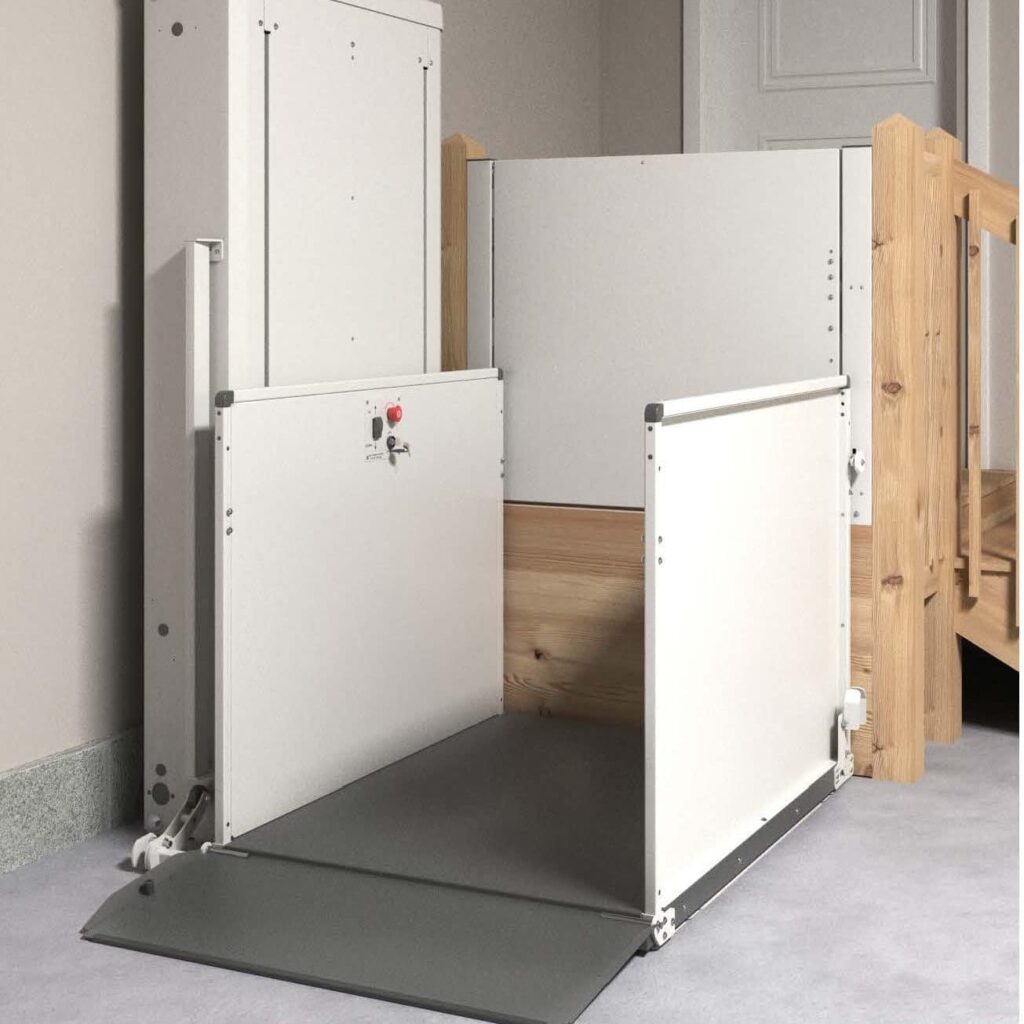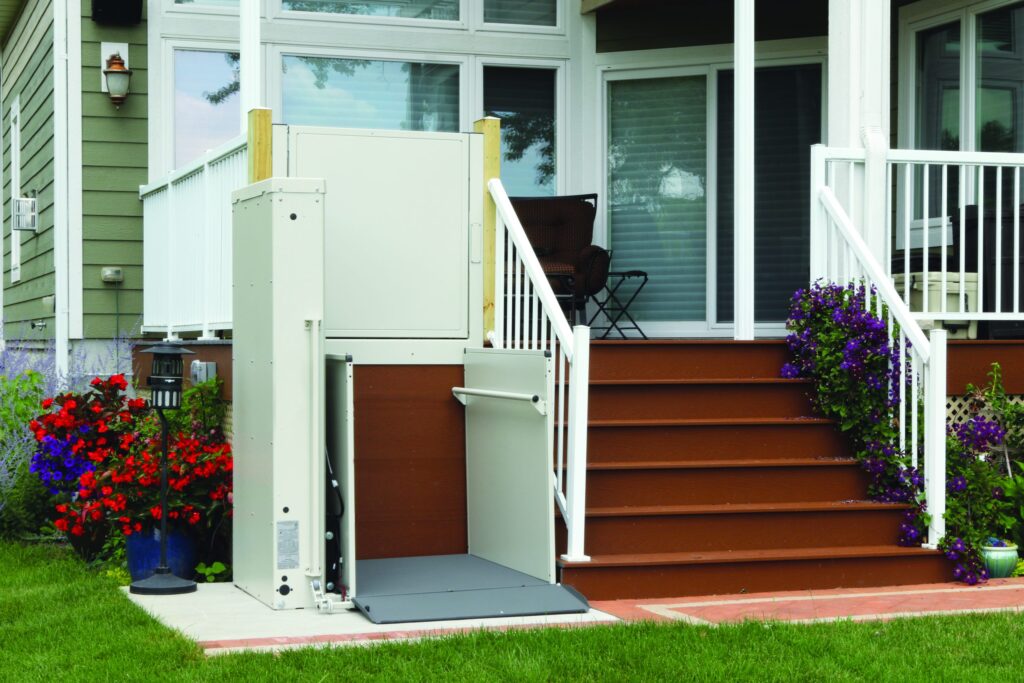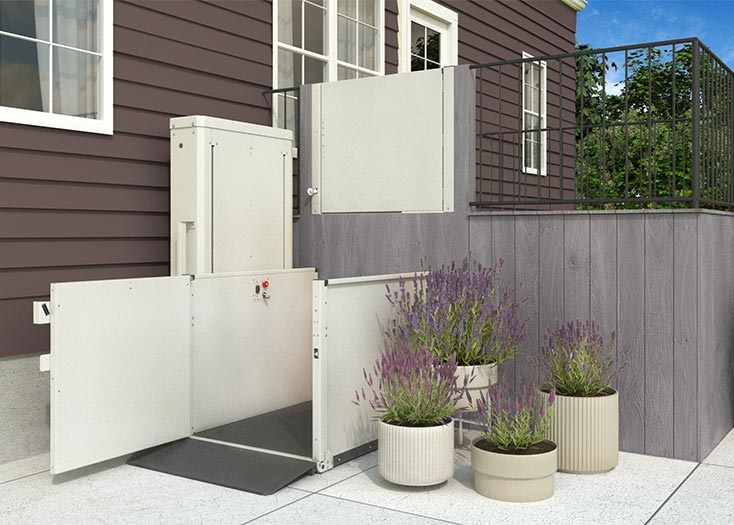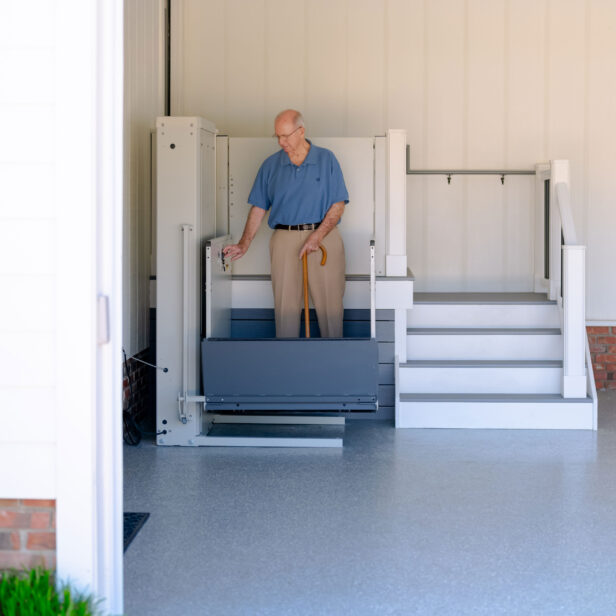
Articles
Vertical Platform Lifts for Homes: Safe and Stylish Mobility Solutions
A lot of homeowners start to notice small signs before a full-blown mobility issue ever happens. Maybe the stairs feel less stable. Maybe carrying groceries up from the garage is a challenge. Or maybe an aging parent has stopped visiting because the steps are too much of a hassle. These are quiet warning signs, not […]
A lot of homeowners start to notice small signs before a full-blown mobility issue ever happens. Maybe the stairs feel less stable. Maybe carrying groceries up from the garage is a challenge. Or maybe an aging parent has stopped visiting because the steps are too much of a hassle.
These are quiet warning signs, not dramatic emergencies, but they’re important. Addressing them early makes it possible to stay comfortable at home, maintain independence, and keep life flowing smoothly.
That’s where platform lifts for homes come in: It’s about accessibility. It’s about future-proofing. And thanks to modern designs, they don’t sacrifice looks or space. Today’s residential platform lifts are compact, safe, and surprisingly stylish. They make multi-level living easier, without the need for major renovations or design compromises.
What Exactly Is a Platform Lift?

At a glance, platform lifts might look like compact elevators, but they’re far more versatile.
Platform lifts for homes are vertical lift systems designed to move a person (often with a wheelchair, walker, or scooter) from one level to another. Unlike traditional elevators, they don’t require deep shafts or heavy construction, which makes them ideal for existing homes.
Where do they usually go?
- From a garage or driveway up to the main floor
- Between a split-level or basement and the rest of the home
- In place of a stairlift where stairways are too narrow or complex
Because they lift vertically, platform lifts take up much less space than ramps and don’t require constant incline like stairlifts. They’re also fully customizable, indoor or outdoor, open or enclosed, and with various platform sizes to fit different mobility needs.
Platform Lifts Can Look Good—Seriously

One of the biggest hesitations people have about installing accessibility equipment is the fear it’ll mess with their home’s design. No one wants their entryway to feel industrial or sterile. But the truth is, platform lifts for homes have come a long way from the clunky metal boxes people remember.
Today’s models are built with both form and function in mind. Think clean lines, powder-coated finishes, and minimal visual clutter. They don’t scream “medical device.” Some are even fully enclosed with glass or acrylic panels that blend in with modern home aesthetics.
Here’s how homeowners are making platform lifts part of their home’s design instead of working around them:
- Exterior lifts can be matched to siding or tucked beside a porch with custom railings or skirting.
- Interior models can be installed with low-profile gates and finishes that complement wood, tile, or contemporary decor.
- For minimalist spaces, open platform designs (no enclosure) keep things clean and discreet.
Bonus: Because these lifts can be designed to fit right into your space, they’re often more subtle than bulky stairlifts running up the railing.
A good installer will walk you through the visual options—from platform shape to color and trim. And in BC, with so many homes built into hillsides or split-levels, this kind of adaptability makes a huge difference.
Built-In Safety That Keeps Everyone at Ease
For anyone installing platform lifts for homes, safety isn’t a nice-to-have, it’s non-negotiable. And it’s not just about the person using the lift. It’s about peace of mind for the entire household.
Modern platform lifts are designed with smart, layered safety systems. The goal is to make operation easy, error-proof, and secure without adding unnecessary steps or fuss.
Here’s what that looks like in practice:
- Automatic gates or doors: These only open when the lift is fully at its destination—no accidental exits mid-move.
- Non-slip platforms: Especially important for outdoor lifts in rainy Lower Mainland weather.
- Backup power: In case of an outage, the lift can still operate safely and let you exit without getting stuck.
- Sensors and obstruction detection: If a pet or object is in the way, the lift stops automatically.
Some systems also offer keyed controls, so young kids or guests can’t use the lift by mistake. And because most residential platform lifts operate with a constant-pressure button (meaning you have to hold it to move), it’s nearly impossible for something to go wrong during use.
It’s safety that doesn’t get in the way, just quiet protection built into every trip.
What to Expect with Installation, Cost, and Upkeep

One of the best things about platform lifts for homes is that they don’t require a total remodel. Unlike full elevators, these can often be installed in just a few days with minimal disruption to the home.
Most homeowners are surprised by how straightforward the process is.
Here’s how it usually goes:
- Site assessment: A specialist will visit your home, look at your space, and recommend a lift that fits your layout and needs.
- Permits and approvals: If needed (especially for outdoor installations), this is handled by the installer.
- Prep and install: Depending on the model and complexity, installation usually takes 1–3 days.
- Testing and training: Before anyone uses the lift, it gets fully tested—and the household gets shown how to use it safely.
What about the cost?
Prices vary depending on the model, location, and any custom design features. But to give you a ballpark: most residential platform lifts range from $7,000–$15,000 installed. Outdoor models or enclosed lifts might run higher. HME Home Health also helps clients explore funding options and grants, especially for seniors or people with mobility-related diagnoses.
Maintenance?
Very low effort. These lifts are built to last and designed for residential use, so they don’t need constant servicing. A quick annual check-up is usually enough to keep things running smoothly. If something ever does go wrong, local support from companies like HME means help is close by.
Why More Homeowners in BC Are Choosing Platform Lifts Now

There’s been a noticeable shift lately. More people are thinking long-term, not just about safety, but about staying in their homes comfortably for years to come.
Here’s what’s driving the interest in platform lifts for homes across the Lower Mainland and beyond:
1. Aging in place is top of mind
Instead of downsizing or moving into assisted living, many homeowners want to adapt to the homes they already love. Platform lifts make that possible. They’re a simple upgrade that removes a major barrier—literally.
2. Multi-generational households are on the rise
In places like Surrey, Langley, and Burnaby, it’s not uncommon to have grandparents, parents, and kids all under one roof. A platform lift makes shared spaces accessible to everyone, especially when basements or secondary suites are involved.
3. BC homes aren’t exactly flat
The way homes are built into hillsides, or designed with multiple entries and levels, makes ramps impractical and stairlifts awkward. A vertical lift just… makes more sense. It’s compact, weather-resistant, and works with the layout, not against it.
4. They’re easier to get than people think
HME Home Health works with families every day to figure out the right lift, get funding where possible, and install without major disruption. More and more, it’s becoming part of standard planning for accessible renovations.
One client recently added an outdoor platform lift for her dad who uses a walker. She said the biggest benefit wasn’t just ease of access, it was that he started visiting again. That’s the kind of real-world impact these lifts can have.
Ready to Make Your Home Easier to Live In?

If stairs are becoming a problem—or you just want to be smart about the future—platform lifts for homes are a solid move. They’re safe, low-maintenance, and they fit right into your space without turning it into a construction zone.
And with a local team like HME Home Health, you don’t have to figure it out on your own. Their specialists will help you find the right lift, walk you through design choices, and make sure the install is smooth from start to finish.
Book a free home assessment or call their team to chat through your options. There’s no pressure, just smart solutions for making your home work better for everyone who lives there.
Contact HME Home Health to get started.
Related Posts

Cost-Effective Accessibility Solutions for Businesses: Why Ramps Matter
May 13, 2025
If you’ve ever seen someone struggle to get into a shop, restaurant, or office building because t...

Essential Tips for Selecting the Right Stair Lift for You and Your Home
April 16, 2025
Navigating your own home shouldn’t be a struggle; however, we understand that as you get older, s...

Aging in Place: How to Stay in the Home You Love for the Long Haul
March 7, 2025
Most people want to stay in their own homes as they age, but that isn’t always simple. Stairs bec...